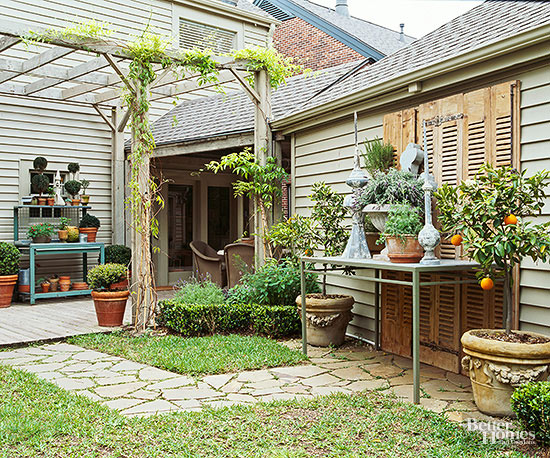






A drought-resistant native, Buffalograss prefers life on the dry side and will form a thick turf that rarely grows more than 8 inches tall. If rainfall and irrigation are scarce, the plants will turn brown and go dormant, reviving quickly when moisture returns. Buffalograss is cold hardy and doesn't need to be fed as frequently as other grasses. It prefers full sun and has few insect or disease problems. Buffalograss can't tolerate heavy foot traffic.
continue reading belowThriving in sun or light shade, Zoysia is a warm-season grass that goes dormant when the temperatures drop in the fall. It's slow growing and will eventually form a thick carpet that's dense enough to handle foot traffic and eliminate weed competition. Some varieties are considered more drought-tolerant than others. Look for JaMur, 'Palisades', 'El Toro', or 'Empire'. It's best to start a Zoysia lawn from plugs or sod. Plants grown from seed can vary in appearance and hardiness. In the North, Zoysia can be slow to green up in the spring.
In warmer regions of the country, Saint Augustinegrass is a durable low-water lawn alternative. It forms mats of thick green foliage that's dense enough to eliminate weed competition. Saint Augustinegrass grows quickly during the summer months but eventually slows down and goes dormant in the fall. The plants grow in either sun or light shade and require regular applications of nitrogen fertilizer. It is not recommended for high-traffic locations. Look for drought-resistant varieties such as 'Palmetto,' 'Sapphire,' 'Floratam,' and 'Seville'.
Once used primarily as a pasture grass to feed livestock, Tall Fescue became a popular turf grass when its resistance to heat and drought were discovered. Tall Fescue is a cool-season grass with thick, coarse, textured leaves with strong disease resistance. Because the plants develop a deep root system, they are better able to withstand dry spells. Tall Fescue grows well in sun or partial shade, stays green all winter, and can tolerate foot traffic. Newer turf Tall Fescue varieties that have finer foliage include: 'Defiance XRE,' 'Titan LTD,' Rebel Shade' and 'Greystone'.
Choosing the right lawn grass for your backyard is only the first step to minimizing water use. Here are some ways to still have a lawn without turning on the tap.
Concerned about wildfire? Try these tips.
Copyright © www.100flowers.win Botanic Garden All Rights Reserved